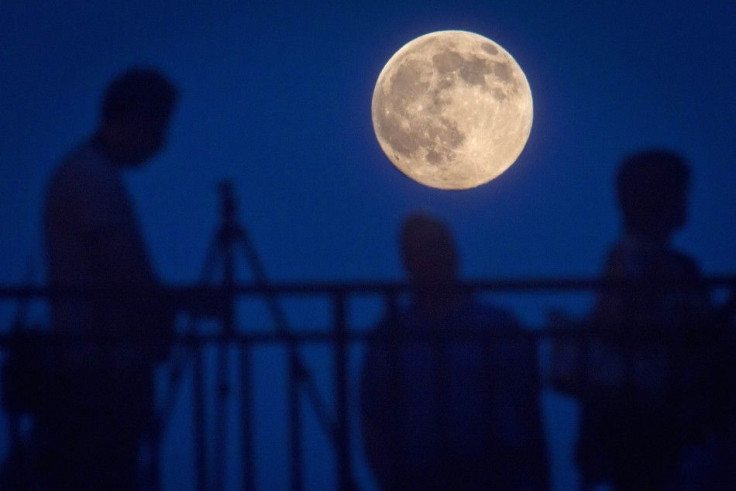Final Supermoon Lit Up The Skies Of The Northern Hemisphere [Watch Video]

On Sept 8, the residents of the Northern Hemisphere got to witness the last and final supermoon of 2014 after the supermoons of July 12 and Aug 10. The third and final supermoon of the trilogy coincided with the "Harvest Moon." It is named the harvest moon because it allows the farmers to collect their harvest with the help of the moonlight.
The last supermoon coincided with the annual Perseid meteor shower because of which the brightness of the moon overpowered the meteors.
The autumnal equinox, estimated to happen on Sept 22, is the astronomical start of fall which happens soon after the harvest moon which is the full moon, according to Mainenewsonline.com. The moon on Sept 8 at 9:38 pm EDT was considered the biggest and the brightest of all the moons of 2014.
James Garvin from the Goddard Space Flight Center of NASA said that the supermoon happens when the moon is closer to Earth than usual and is most noticable when it occurs during the full moon.
The phenomenon of "Perigee Moon" is when the full moon, at first sight, might look the same as the supermoon, but upon closer inspection, it is seen that the moon's elliptical orbit is around the Earth, making it bigger and brighter, reported Noozhawk.
The Internet was flooded with pictures of the supermoon which looked absolutely spectacular. A lot of photographers had marked the date on their calendars so that they wouldn't miss this fabulous event. One among them was a photographer from Pittsburg, Dave Dicello.
Dicello said that this was an event he did not want to miss. He was able to capture the harvest moon over the Steel City by sitting above the PPG Building, and he used a 70-200 lens and a 2X teleconverter, reported Tech Times.
Professor Jon Saken of the Physics Department said that the same way the sun turns more red near the horizon, the moon does the same because more dust trapped the light, except the one on the red side of the spectrum.
Those who missed the beautiful sight will have to wait for the next supermoon which will be on Sept 28, 2015.
YouTube/DAHBOO77




















